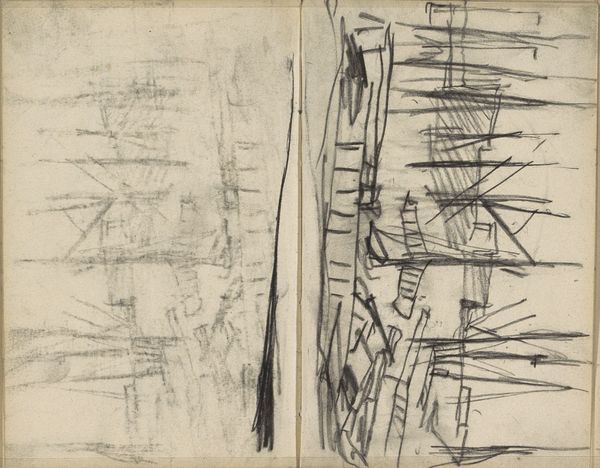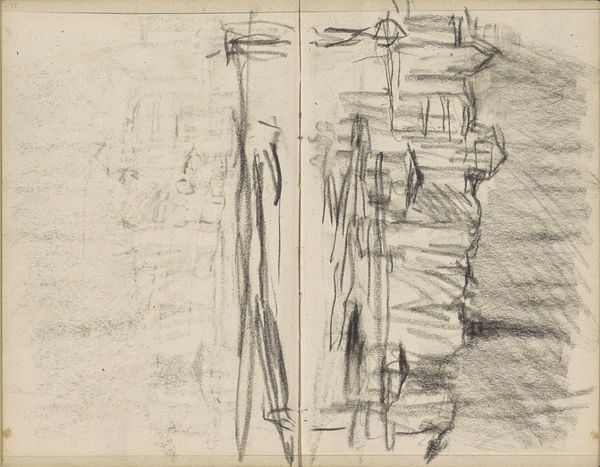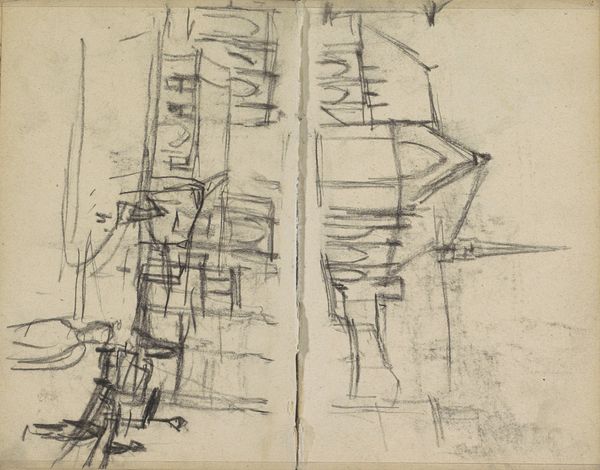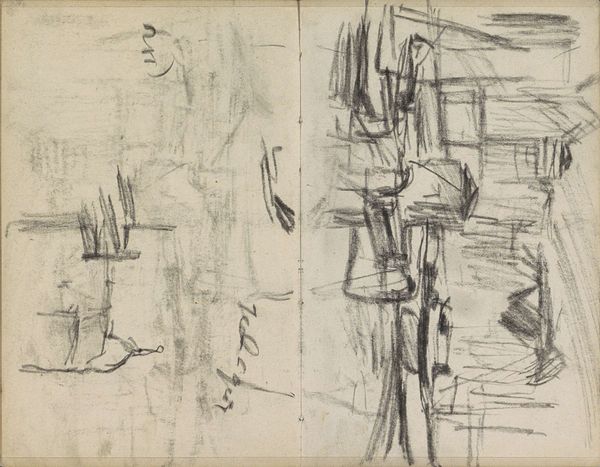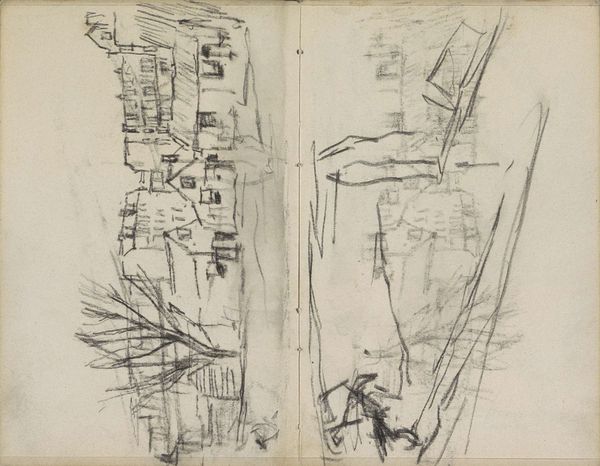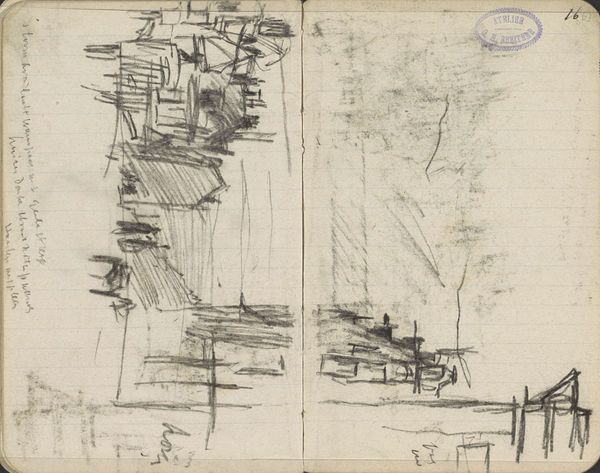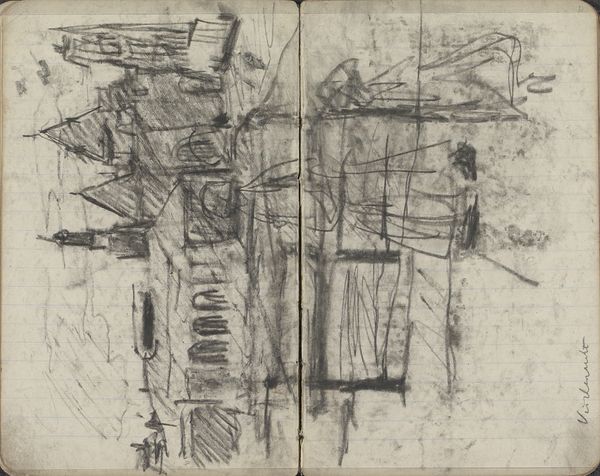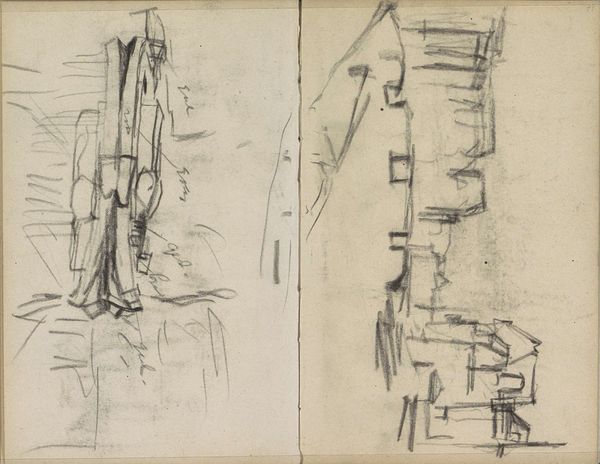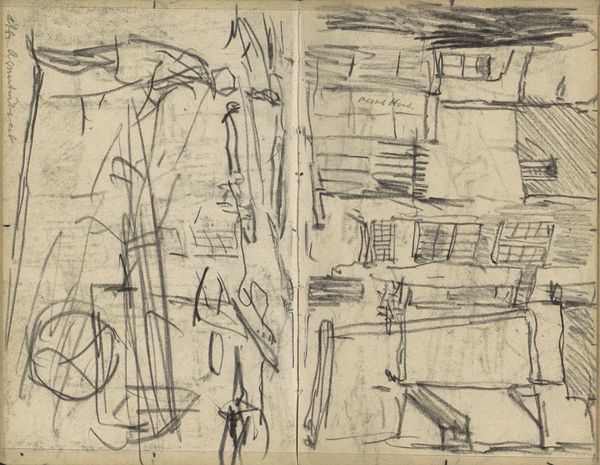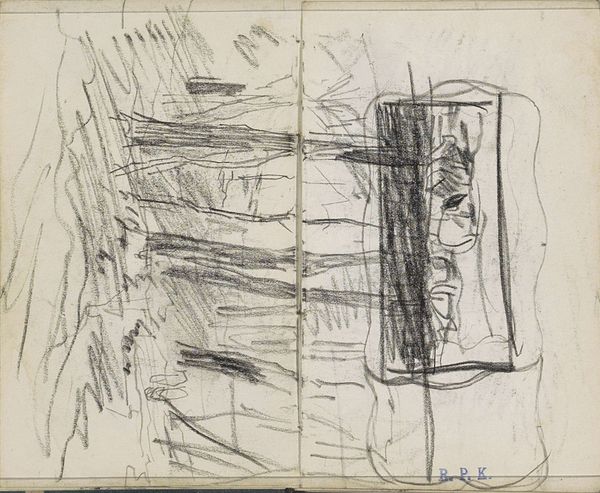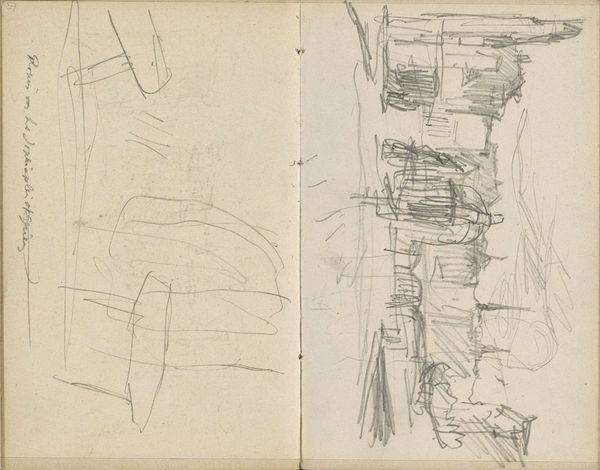
Gezicht te Amsterdam, mogelijk de Dam of het Damrak c. 1892 - 1923
0:00
0:00
georgehendrikbreitner
Rijksmuseum
Copyright: Rijks Museum: Open Domain
Editor: This is "Gezicht te Amsterdam, mogelijk de Dam of het Damrak" by George Hendrik Breitner, dating from around 1892 to 1923. It's a pencil and pen-ink sketch on paper. I find it really intriguing; it’s just a few suggestive lines, very fleeting. What do you see in this piece, especially regarding the historical and social context of Amsterdam at this time? Curator: It's a wonderful selection! Breitner's sketch offers a window into Amsterdam during a period of intense urbanization and social transformation. It prompts us to consider: Who were the inhabitants of these quickly sketched buildings? How might the rapid changes in Amsterdam's infrastructure have impacted various communities? How were artists representing social tensions and change? Editor: So, this seemingly simple sketch actually engages with significant social and political issues? Curator: Precisely! Think about Amsterdam in the late 19th century: industrialization was drawing rural populations to the city, leading to overcrowding, class divisions, and challenges to the existing social fabric. Artists like Breitner were responding to, and in many cases critiquing, this rapidly evolving urban landscape. Does the medium of "sketch" then become relevant in understanding Breitner's own, perhaps incomplete, perspective? Editor: That makes sense. The sketch’s unfinished nature could symbolize the incomplete nature of societal progress, or even the displacement and erasure inherent in urban development. Something very ephemeral to hint to broader concerns. Curator: Absolutely. Considering Breitner’s positionality within this context is crucial. Was he a detached observer, or was he actively engaging with these societal shifts in his larger body of work? Who had the privilege to leisurely sketch while urban change affected people's livelihood and community? Editor: I never considered the work to have so many different interpretations that point to urban and social themes! I guess this connects with some other of Breitner's paintings that show similar views. Curator: It underscores the importance of analyzing artworks not just for their aesthetic value, but as complex documents reflecting broader cultural and political landscapes. Thank you for prompting this discussion.
Comments
No comments
Be the first to comment and join the conversation on the ultimate creative platform.
